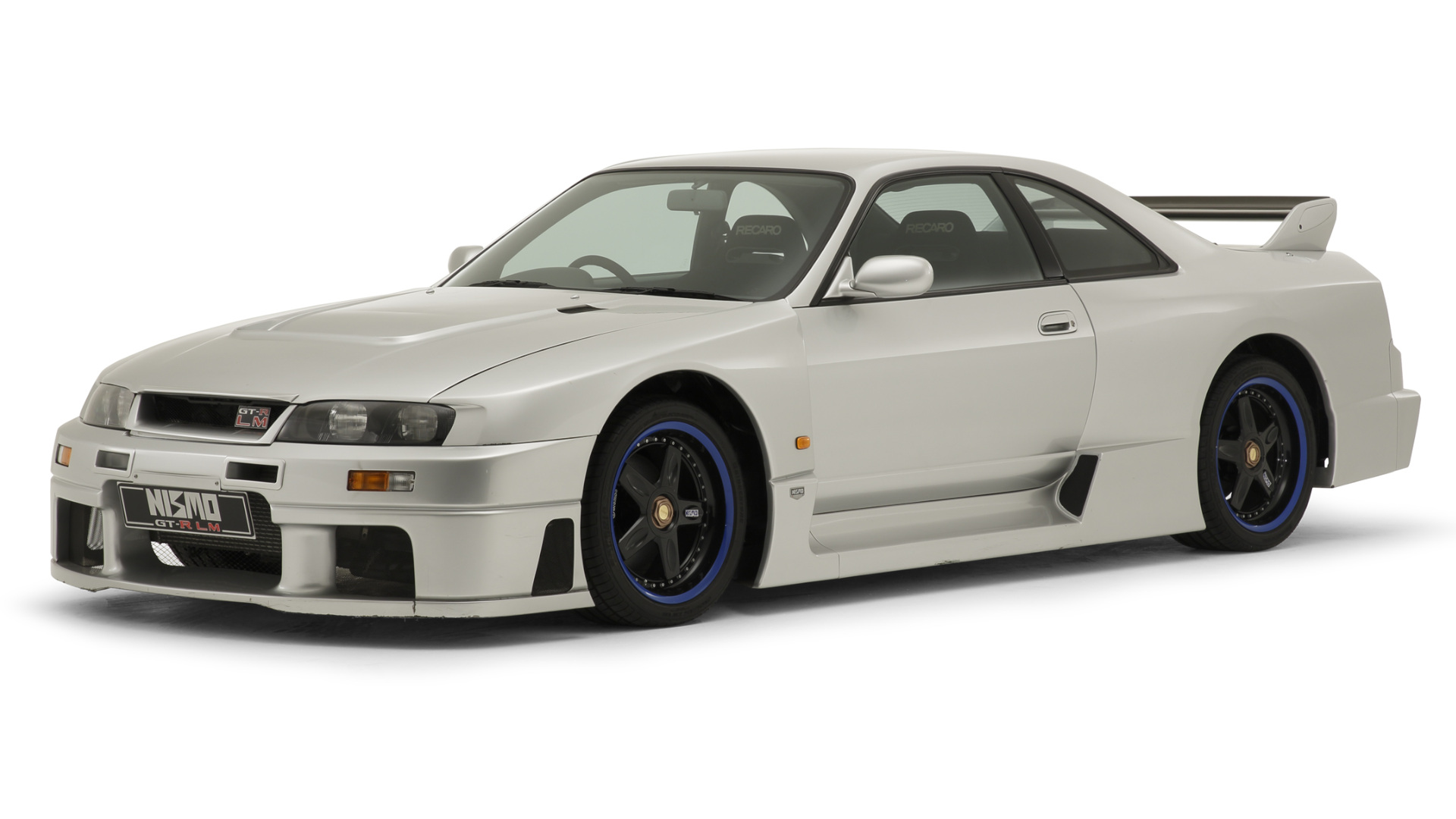

The Nissan Skyline GT-R has had a few special editions over the years, but none are as rare as the 1995 Nissan Skyline R33 GT-R LM. Here’s the story of a glorious one-off built for homologation purposes.
By 1995, the R32 Skyline GT-R had already been essentially kicked out of Group A racing for winning too much. Nissan had moved on to Group C, but that was falling apart, and the company regrouped to tackle GT racing instead. The new R33 Skyline GT-R seemed like the perfect platform with which to enter in the GT1 class at Le Mans and the BPR Global GT series. There was one hitch: the company would have to build one roadgoing model for homologation purposes.





That car ended up known as the R33 GT-R LM. Built by Nismo, Nissan’s in-house racing operation, the car was radically modified for racing purposes. Only the roof, glass, doors, and tail lights were kept the same, with everything else tweaked for performance benefits.
The car gained a huge widebody kit, designed to allow the racing team to maximize downforce and grip. The front bumper itself was modified with huge air inlets, and the guards were pumped front and rear to allow wider racing rubber to fit. The car’s indicators ended up on the bumper, as the fender lines had changed too drastically to leave them in the original position.
The rear gained a completely redesigned bumper assembly, designed specifically to allow the racing versions to fit effective underbody aerodynamics. The original car’s multi-link suspension was thrown out, too, and replaced with double wishbones at all corners in a fully adjustable racing-ready setup. Finally, to suit the GT1 class, the all-wheel-drive and four-wheel-steering systems were removed. The car was set up to steer solely with the front wheels, with drive sent to the rear.

With the new racing-spec panels and modifications, the car weighed just 2,535 pounds, a significant drop over the stock model’s curb weight of 3,373 pounds. It boasted 300 horsepower from its 2.6-liter turbocharged straight-six engine.
Nissan also built two racing cars that actually went on to compete at Le Mans. The #22 and #23 cars went up against competition including the Ferrari F40 LM and McLaren F1 GTR in the 1995 race. The #23 was tasked with racing flat out, but retired with mechanical issues. Meanwhile, the “turtle” #22 finished 5th in class right behind four McLaren F1 GTRs, and 10th overall.
1996 saw less success, with the #22 failing to finish. The #23 entry made it home 10th in the GT1 class, finishing 15th overall. The game had changed by this point. The Porsche 911 GT1 stunned the competition by getting a purpose-built sports prototype racer through homologation. A roadcar-based entry like the GT-R LM simply wouldn’t be competitive anymore, and Nissan moved on to the purpose-built R390 GT1 in future years.



The car went on to inspire the later LM Limited special edition, of which 188 were built, but they lacked the same widebody kit and fearsome stance of the original. Today, the R33 GT-R LM lives at the Nissan Heritage Collection, also known as the Nissan DNA Garage. It’s rarely driven, with even Carlos Ghosn apparently denied the chance to get behind the wheel.
Homologation rules have given us great performance cars time and again, along with some of the wildest-looking examples. It’s just a shame that Nissan didn’t build more widebody GT-R LMs for the street because that look is to die for.
Got a tip? Let the author know: lewin@thedrive.com